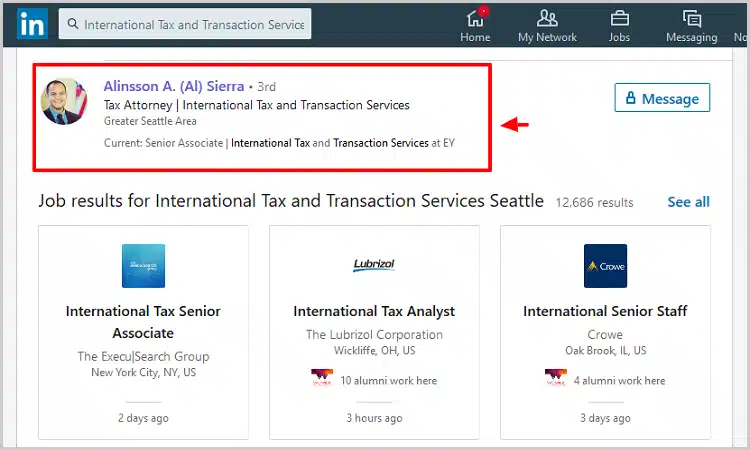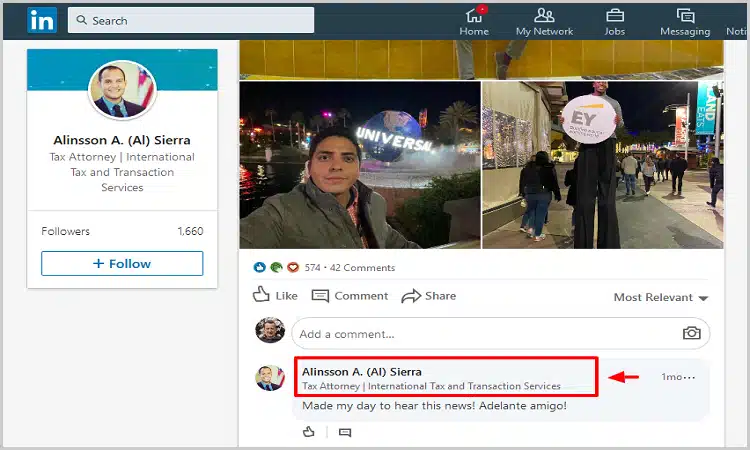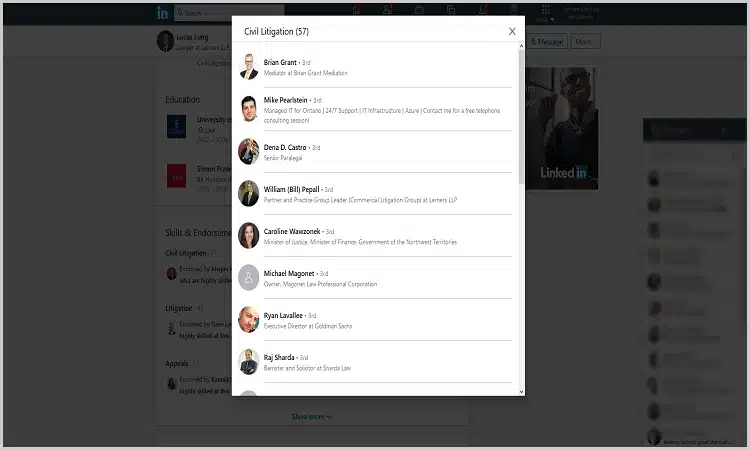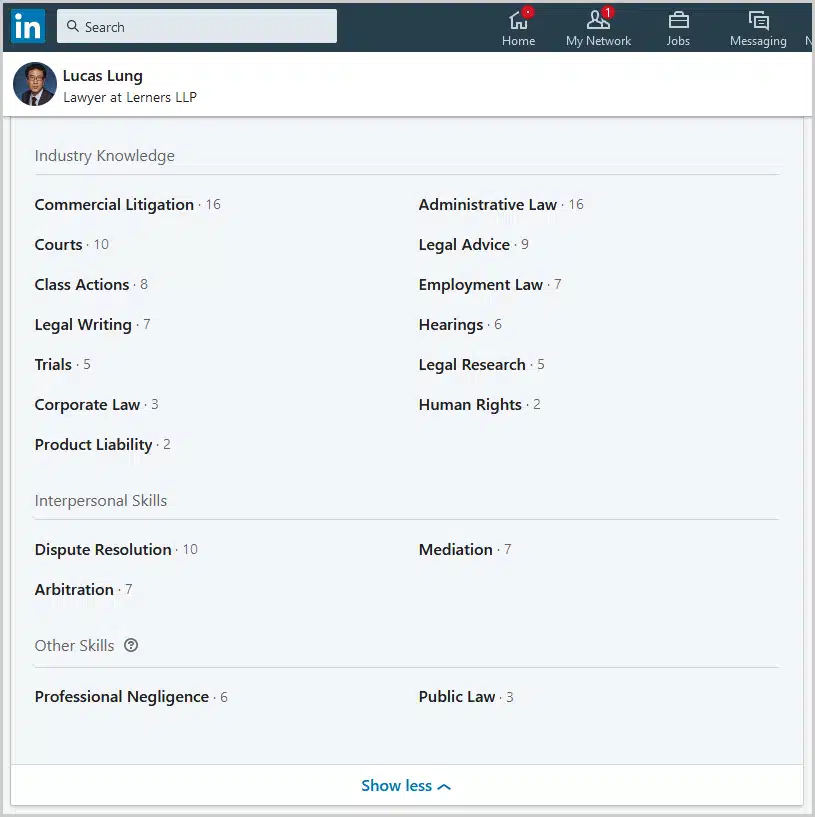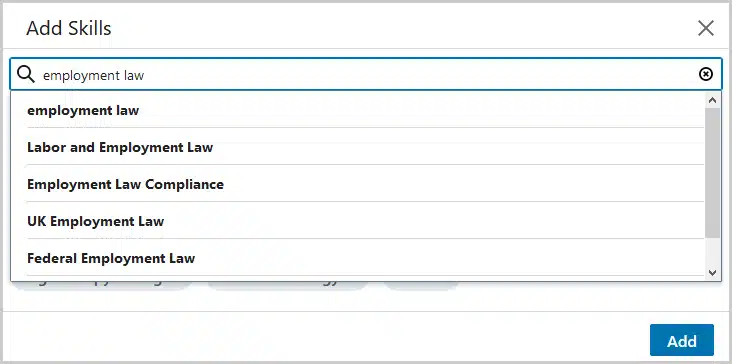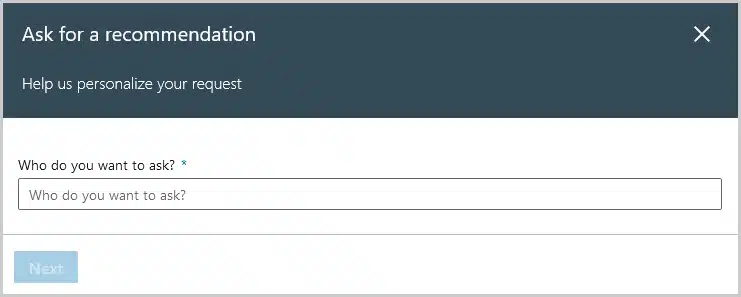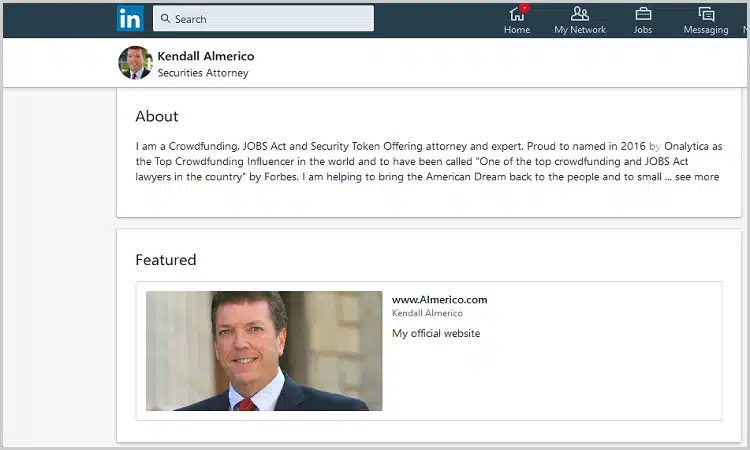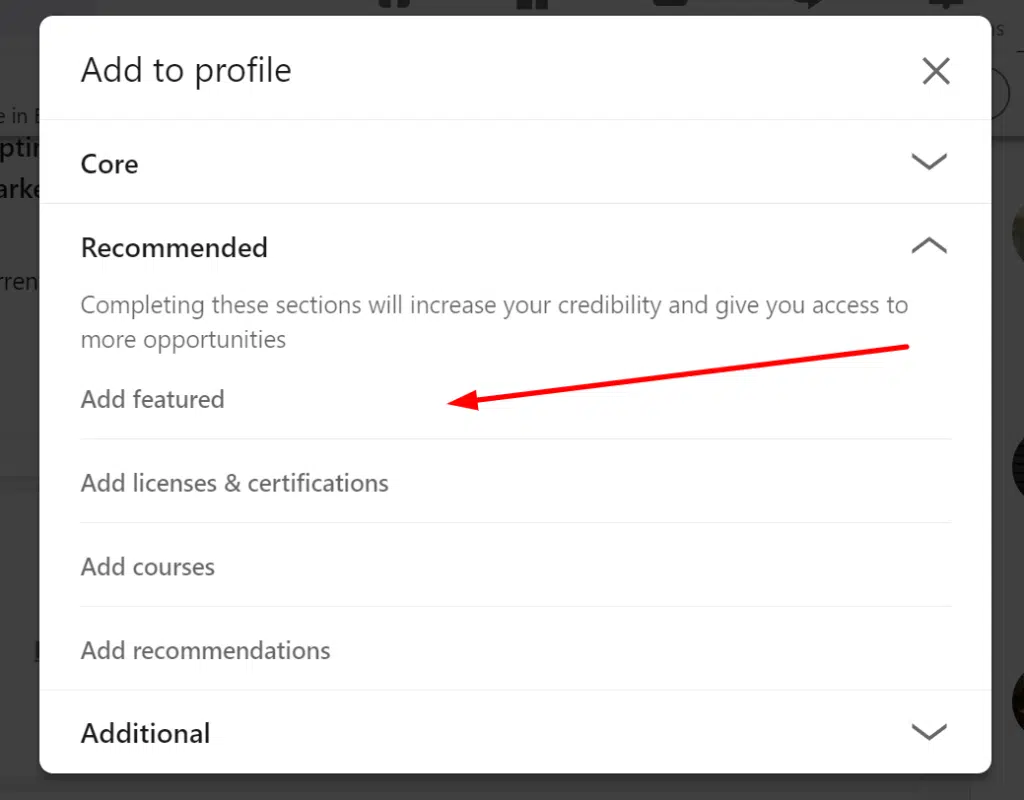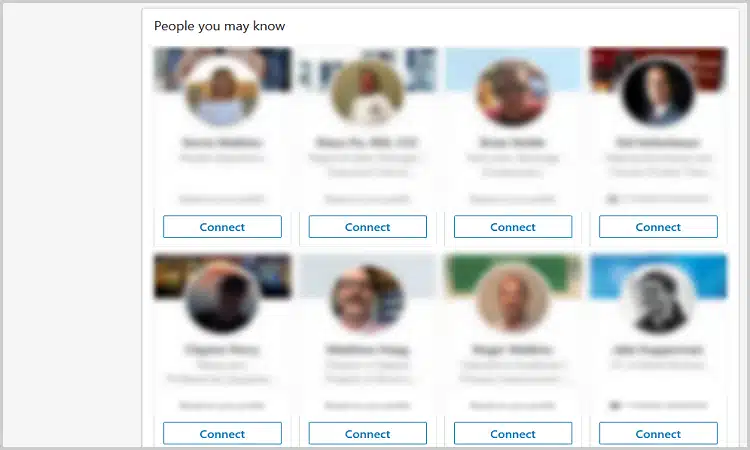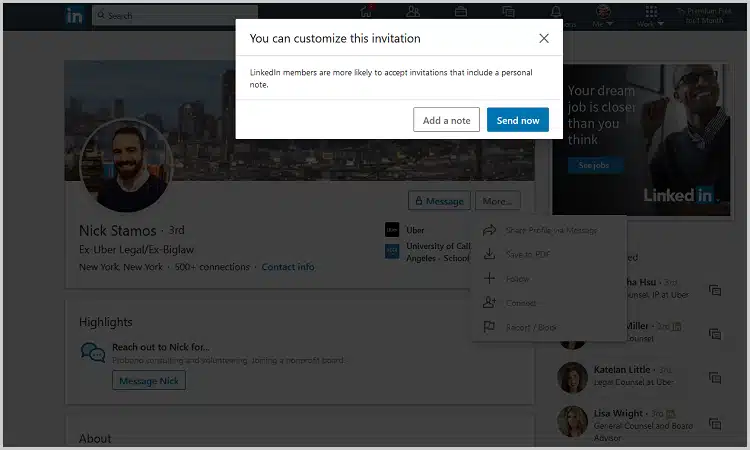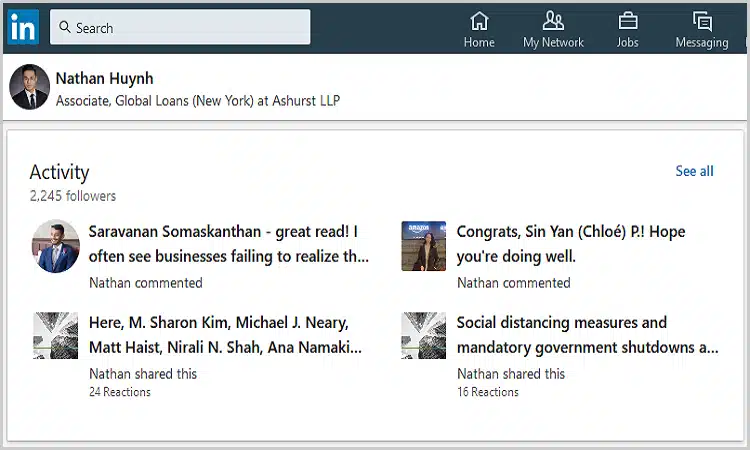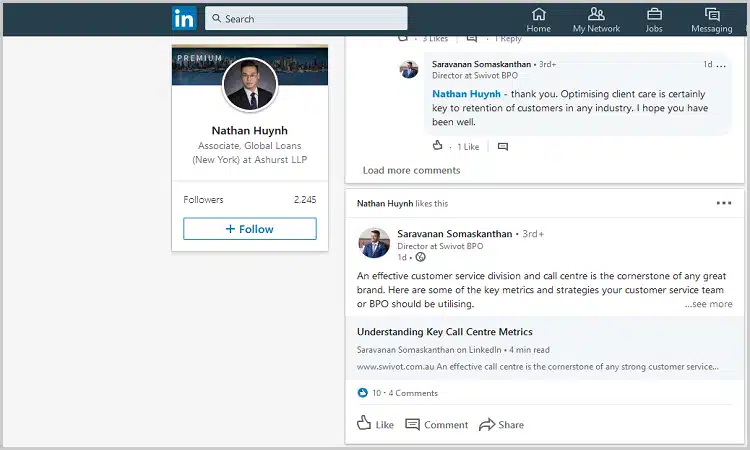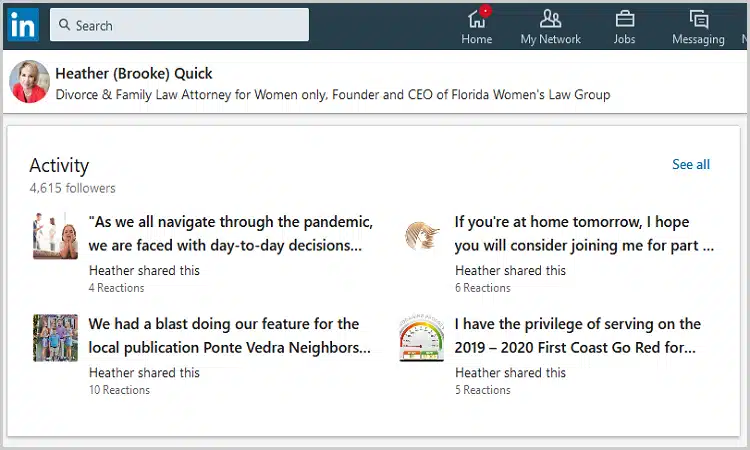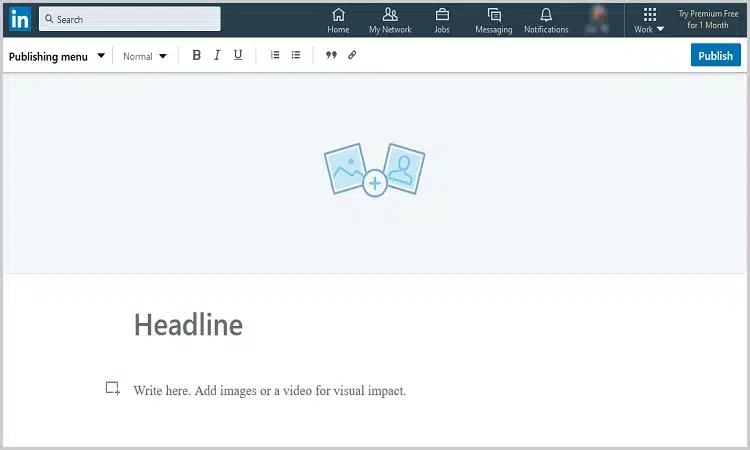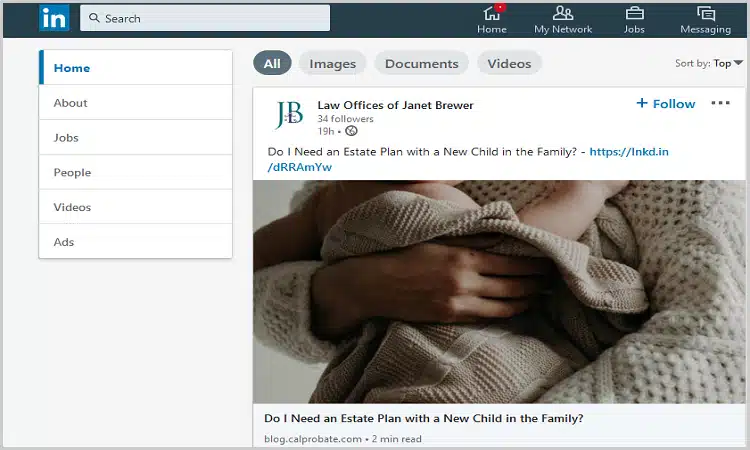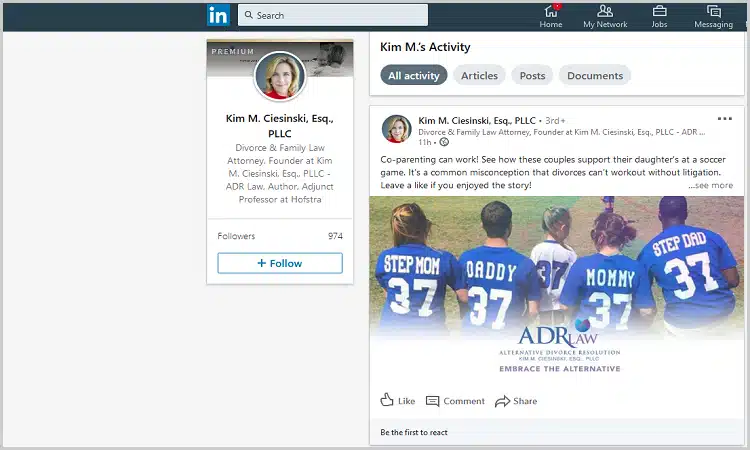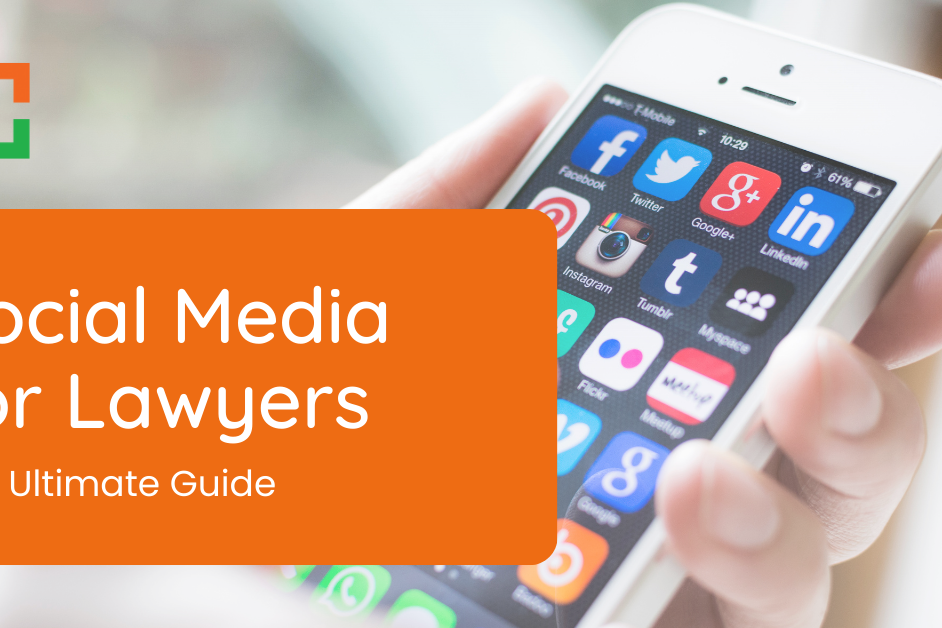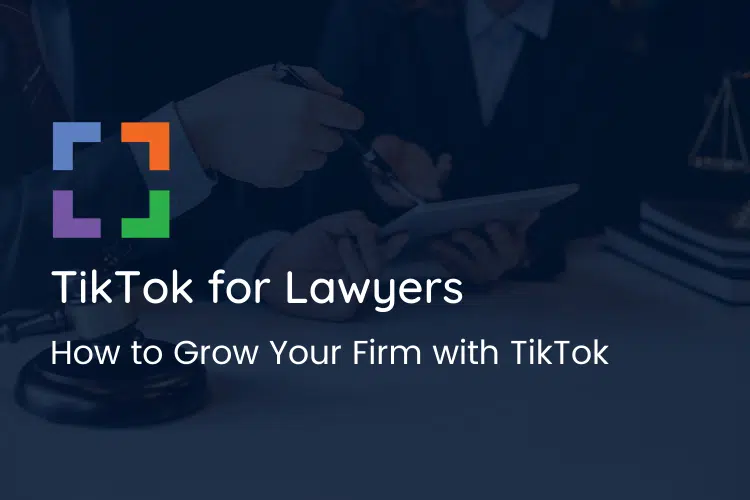LinkedIn for Lawyers: 11 Tips to Create a Stand-Out Profile
LinkedIn marketing for lawyers is one essential law firm marketing strategy. The platform boasts over 930 million professionals on its platform, including decision-makers and influencers needed to grow your practice.
It’s an impressive networking tool and a goldmine for lawyers working in B2B practice areas. Which is why it’s the platform we recommend above all else when we talk about social media for lawyers.
So, how can your firm use the platform more effectively to generate sales leads?
I’ll take you through 11 practical steps to get you started with using LinkedIn to build your reputation and attract clients.
Quick Links
- 1. Create a strong first impression with your profile
- 2. Get the about section of your profile right (it’s more than a CV)
- 3. Complete the profile contact info
- 4. Complete the Experience section of your profile
- 5. Add Education to your profile
- 6. Add Skills and Seek Endorsements and Recommendations
- 7. Add multimedia to your profile wherever possible
- 8. Grow your network by regularly sending connection requests
- 9. Get active: Like, comment, and share
- 10. Post articles and other content to your feed
- 11. Consider advertising on LinkedIn
- What are the benefits of going premium on LinkedIn?
- What about a company page?
LinkedIn for lawyers: A worthwhile investment
According to the American Bar Association’s Legal Technology Survey, around 87% of law firms are using LinkedIn.
How are they using it? To build credibility and authority.
The way a law firm would use LinkedIn or another social media platform is different than how a B2C company would. Rather than promoting products and promotions, lawyers want to develop themselves as a thought-leader in their practice area by sharing valuable content.
For example, write articles and share ideas around topics relevant to you to spark a conversation. You’ll naturally get more engagement and followers.
And when a prospective client looks you up, the wealth of content you produce will go a long way in impressing them. That’s when they’ll choose you over a similar competitor.
11 tips to build your law firm’s reputation on LinkedIn
Here are 11 tips to get you started with LinkedIn marketing for lawyers.
1. Create a strong first impression with your Linkedin profile
LinkedIn allows you to have a professional lawyer profile and a company profile for your law firm.
This article is focused on the individual profile. LinkedIn is all about the professionals themselves rather than a database of companies.
Your profile is the gateway to getting the most out of LinkedIn. It’s worth spending time to get it right.
Let’s first cover what you need to do to create a strong first impression:
Get the photos right
It’s important to remember that the pictures you’d put on your Facebook are different than what you want on LinkedIn.
Your profile and header pictures are your chance to make a first impression that sticks (in a good way). That means no photos of you in sunglasses or lounging at the beach.
Instead, always focus on professionalism. We recommend you invest in professional headshots that are clean, with minimal distractions.
And there are two photos required, not just one.
Take this example of an immigration lawyer in Canada.
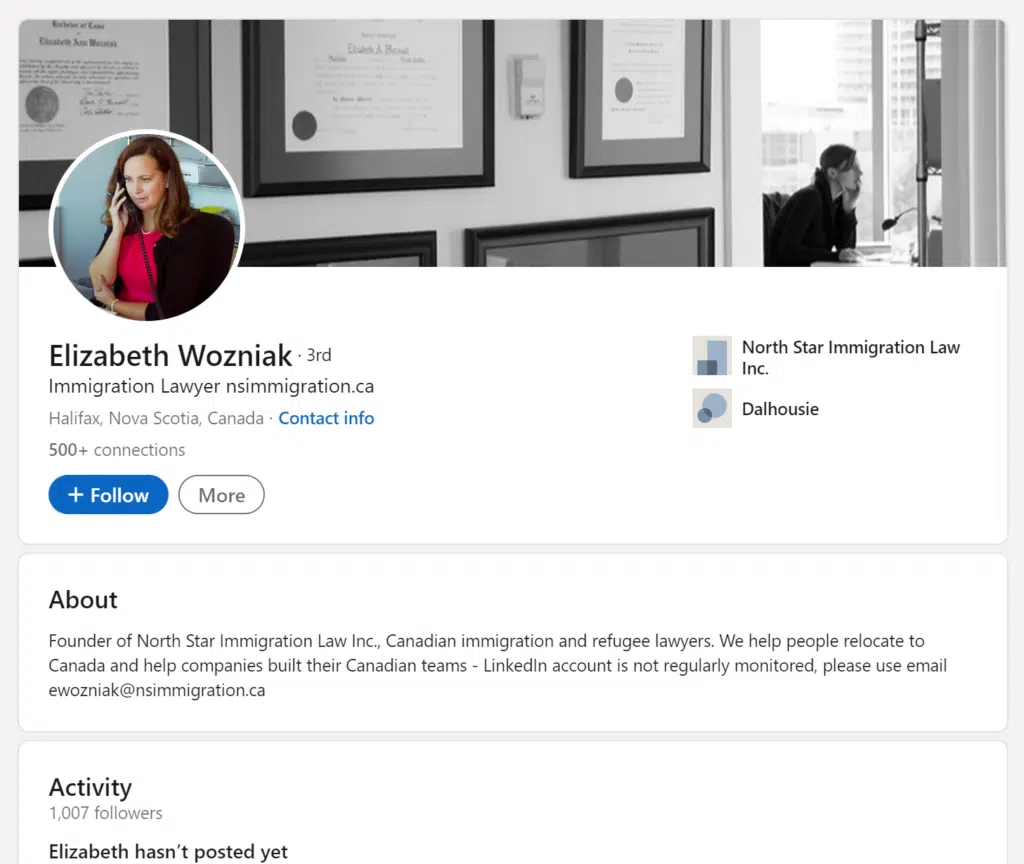
This immigration lawyer includes a black and white background photo of her working in her office to contrast with her color headshot image.
It looks stylish and professional and immediately presents credibility to readers of her profile.
Include not only the professional headshot but a background image. Not many lawyers do that, and it makes you stand out.
Get the headline right
Your professional headline is a great opportunity to immediately connect with your target audience.
Here’s a great example of a descriptive headline.
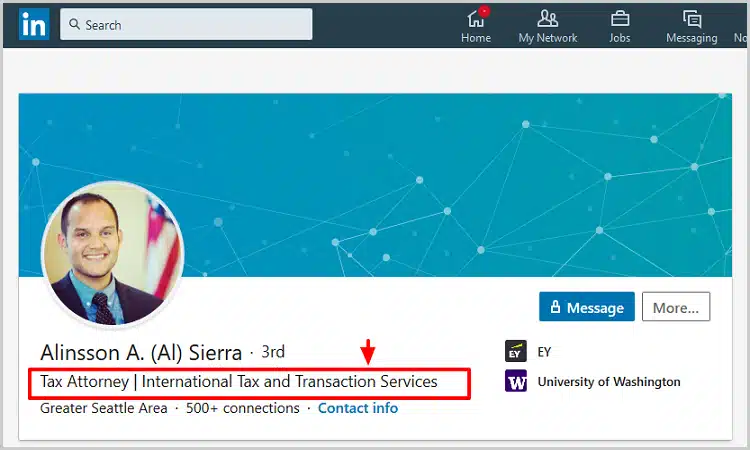
Do you see how this lawyer provides information about the main service he offers in the headline?
This is likely to immediately grab the attention of somebody checking the profile and seeking a specialist in these services.
Another advantage of being more descriptive of your services in your headline is that you will naturally use your keywords. This will help you show up in search.
Consider LinkedIn as the largest database of professionals on the planet. Powering it is a search engine that works in much the same way as any search engine.
If people are searching for your keywords in your location, you want them to see your name so that they click through to your profile.
Anyone searching for “international tax and transaction services in Seattle” will see your profile at or near the top of the list if you have optimized the headline with your keywords like the tax attorney in the previous example:
Get noticed when commenting and posting
Note that your headline, as well as showing up in searches for your keywords, appears in invitations to connect, comments you post, and newsfeed updates seen by everyone in your network (more about that in Step 9).
Using the example of the same tax attorney as before.
The bottom line? It’s really important to get your headline right.
2. Get the About section of your profile right (it’s more than a CV)
Many lawyers treat their LinkedIn profile About section as little more than a glorified CV. So, we often see something like this:
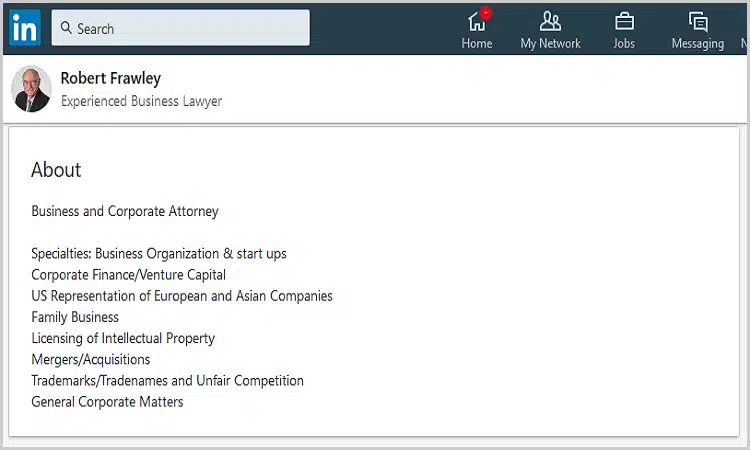
The About section should not just talk about the positions you’ve held or list your specialist areas.
It should do much more than that. Describe how you can help your target audience. What benefits do you provide? Why should they keep reading?
The About section allows up to 2,000 characters, including spaces. Try to use most of them to relay benefits and insert keywords (more about that later).
This one from estate planning attorney Richard A. Selinger in Colorado does a good job of relaying the benefits (in detail) of using his services.
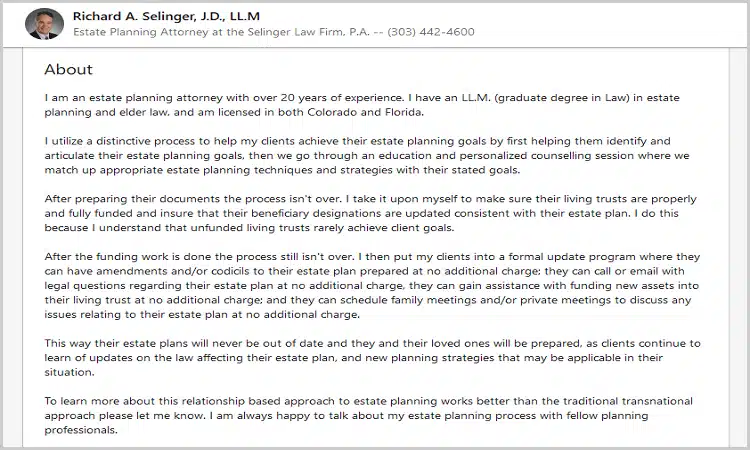
Keep in mind that only the first 200 or so characters of your summary will appear above the fold (meaning readers will have to click “see more” to view the rest of it).
Because of that, you want to start off strong, with an engaging and sincere elevator pitch.
3. Complete the profile contact info
If you’re on LinkedIn for marketing purposes, you should be looking to connect with as many potential clients as possible from your profile.
Make it easy for them to find and connect with you.
It sounds obvious, but you’d be amazed how many lawyers miss this basic part of LinkedIn marketing: complete the contact information.
Previously, LinkedIn kept contact information off to the side and somewhat hidden (perhaps to keep members on the platform and not clicking away), but it’s now front and center on your profile.
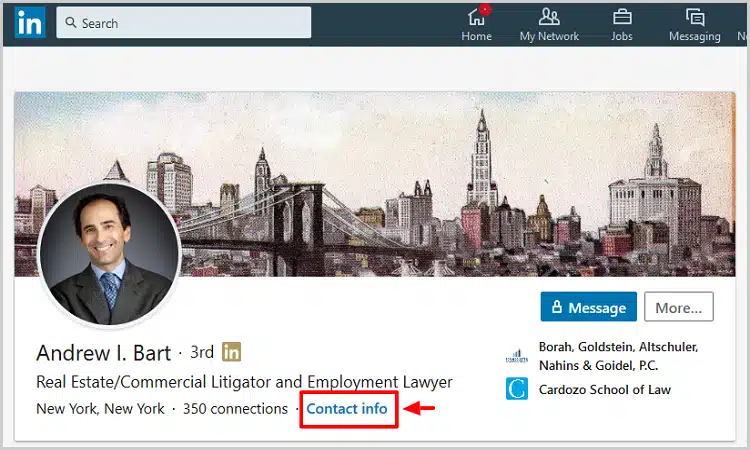
Clicking Contact info opens up a box like this.
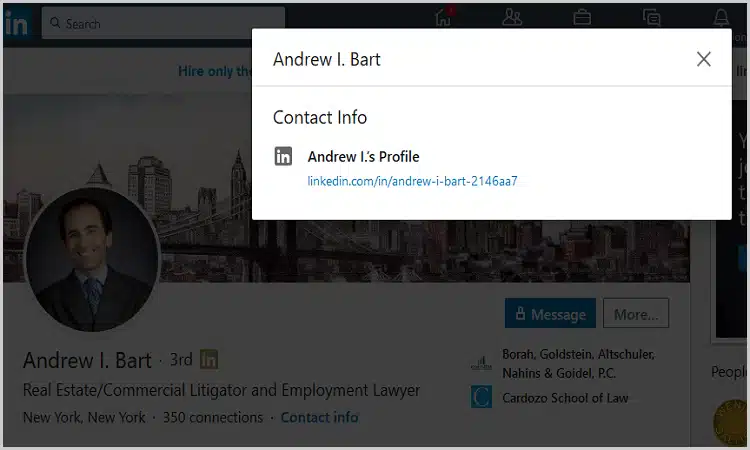
Note how the box in the above example only contains the LinkedIn profile URL. That’s not much use to us as we’re already there.
Many other details can be completed to show up in this box. Take a look at this example.

You can include your website URL, Twitter profile, and more. This provides potential clients with multiple ways of contacting and following you rather than just messaging you through LinkedIn.
4. Complete the Experience section of your profile
By the time you reach this step, you’ve already got the attention of visitors to your profile and enabled them to reach out to you.
Next, it’s time to back up what you say and add credibility to your LinkedIn profile.
You do this firstly by completing the Experience section.
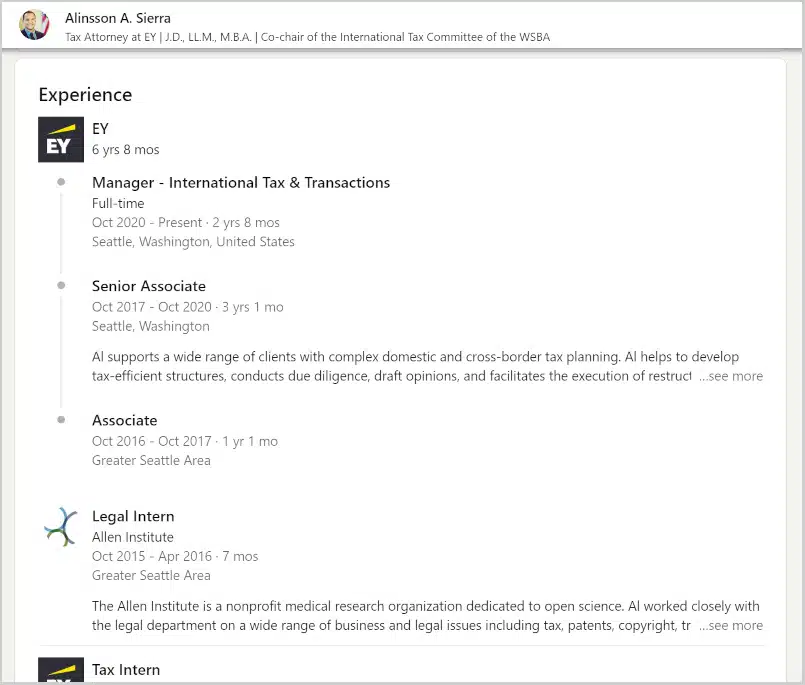
This section allows you to detail your present and past positions.
You may have a rich and fulfilling professional background, but newsflash: most readers won’t be very interested in it.
Your potential clients may skim it, but we’re getting further into the guts of your profile here, and many visitors will make up their minds about you from the sections above Experience.
That said, this section is still very important for two reasons:
- It establishes credibility
- It’s another opportunity to include your keywords
A note on branding
Just as you brand your law firm, your LinkedIn profile should also follow your brand guidelines.
If you’ve recently changed practice areas, or have a colorful work history, be selective with what you include in your profile.
As a family law attorney, the people you want reading your profile shouldn’t care about your past experience as a marketing consultant. Leave out anything that isn’t directly relevant to your career today.
Include career milestones that led you to where you are today. Every piece of your profile should have a purpose.
5. Add Education to your profile
Next up is Education. We’ll keep this fairly short and simple — and so should you, within reason.
The same applies to the Education section as to the Experience section: don’t go overboard with listing every qualification you’ve received, as your potential clients will probably only skim-read it.
However, what you include may be useful in helping you rank in search, so use keywords wherever you can.
This is better than nothing.
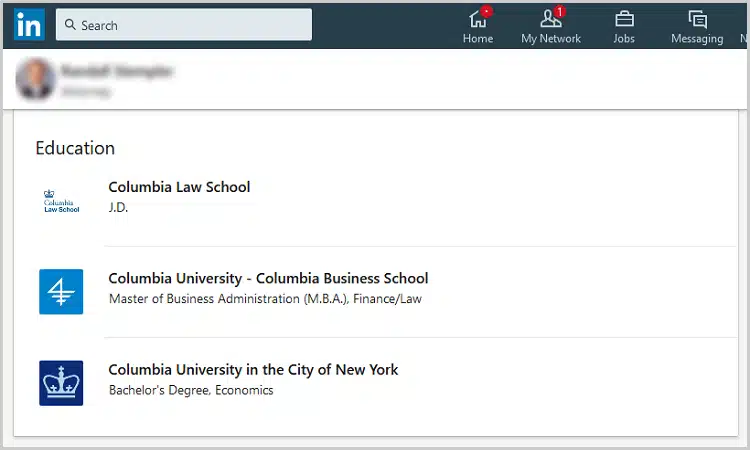
However, notice the absence of any dates or descriptions. It’s wasting the opportunity to provide valuable information and to include potential keywords.
This is a more complete and effective example.
Here’s another more complete example from an attorney in Austin, Texas.
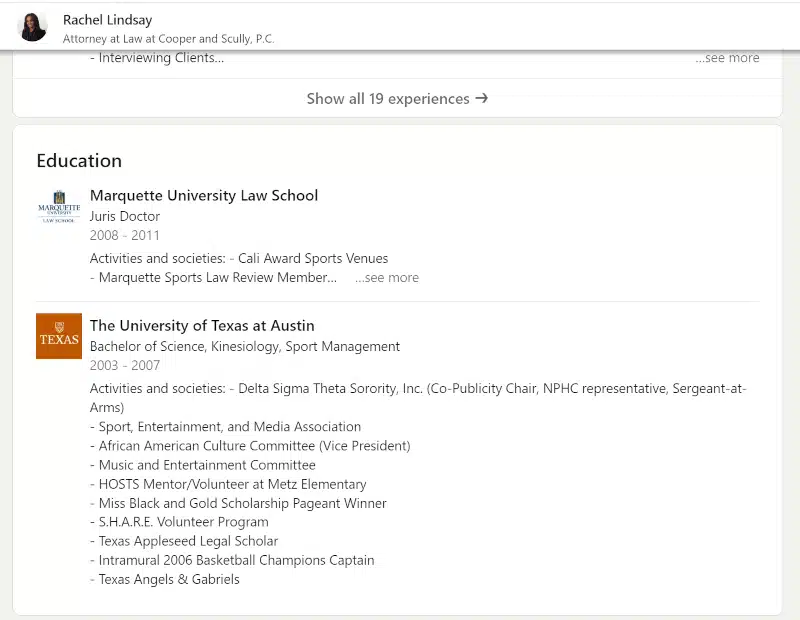
Also, add any appropriate Licenses and Certifications in the section below Education:
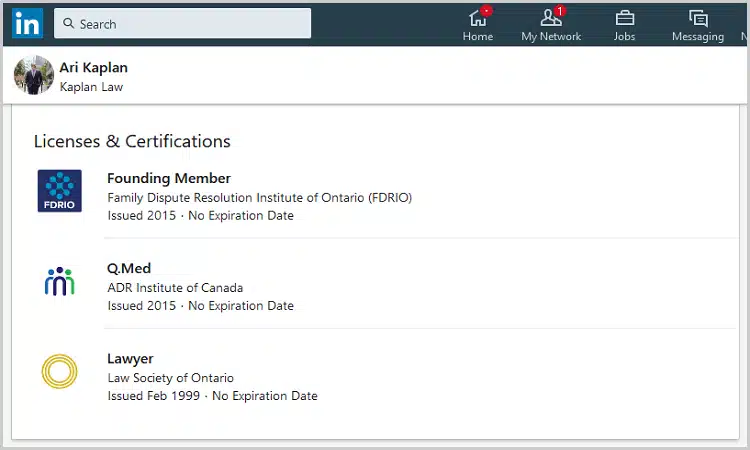
That’s about it for the Education section. Quick and simple.
6. Add Skills and seek Endorsements and Recommendations
The Skills and Recommendations sections are important to establish credibility and authority.
Think of customer reviews on your website. These sections hold similar importance on LinkedIn.
The Skills & Endorsements section serves three important purposes:
- Establishes authority through your skillset
- Use of keywords to help you rank in internal LinkedIn search
- Helps you establish credibility through endorsements from others
This is a pretty good example from an attorney at Lerners LLP in Toronto.
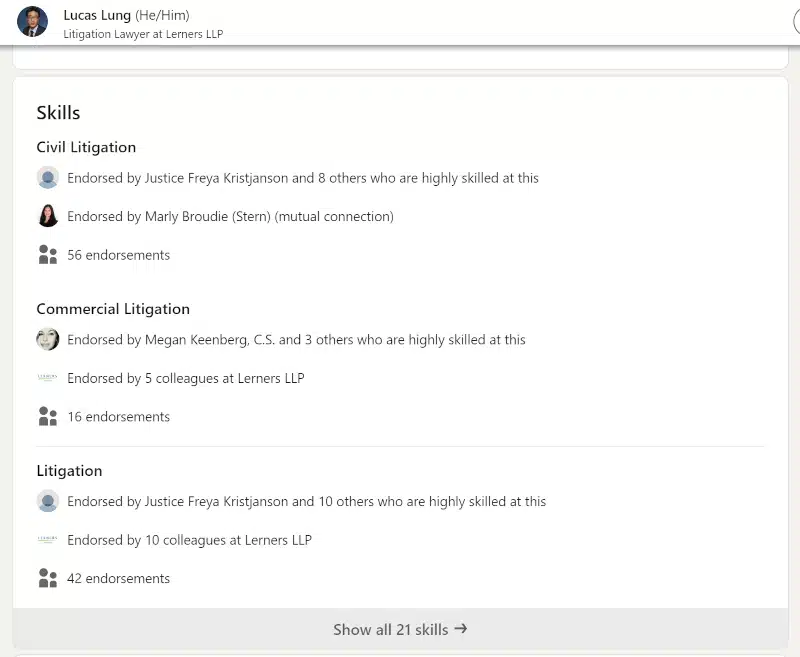
If you click on a particular skill, such as “civil litigation” in the example above, a popup window shows who has endorsed you.
As you can see, this particular lawyer is endorsed by many of his peers.
If you click on Show All Skills in the Skills section, it reveals a lot more information about your industry knowledge, interpersonal skills, and other skills that you’ve been endorsed for.
Add any skills that apply to you and then seek endorsements for them. You simply click on Add a new skill when in editing mode in your profile and select the skill you want to add (LinkedIn suggests some but you can choose others).
You can add as many as 50 skills, so you can afford to get really granular with your practice areas. But be sure to remain relevant to your main legal focus.
Here you can see how LinkedIn generates automatic suggestions as you type in the skill you want to add.
Gather as many endorsements as you can for the skills you select. This will demonstrate that you are who you say you are (social proof).
LinkedIn will ask your network on your behalf to endorse you, and it’s easy for people to do this with a single click (don’t forget to thank them).
A good way to gather endorsements is to actively endorse others when prompted. Most will feel obliged to return the compliment.
Finally, for this step, also seek Recommendations from clients and peers. These will appear below your skills and endorsements. They are the icing on the cake for your credibility.
Ex-colleagues recommend this family law attorney in Los Angeles, for instance.
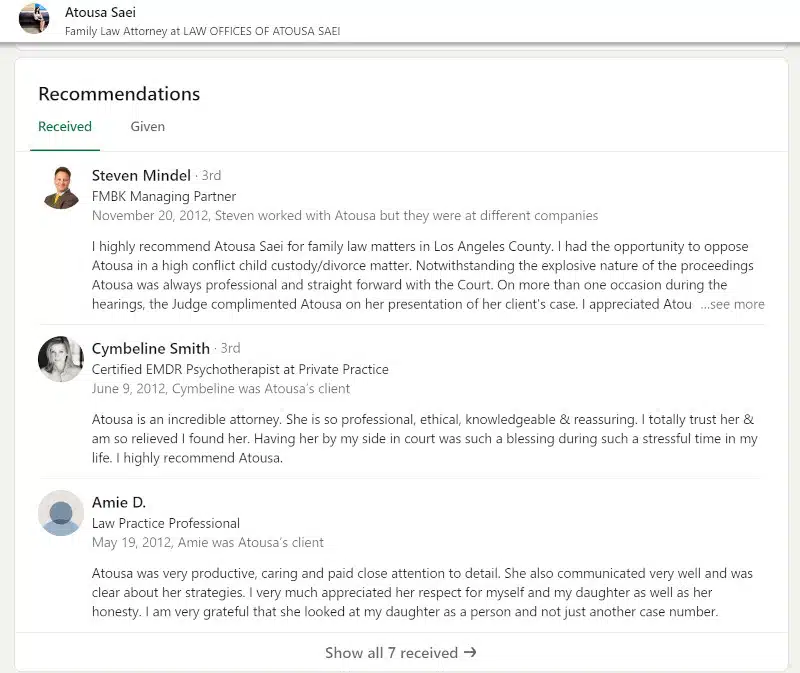
Recommendations are harder to obtain than endorsements. You need to actively seek them, and people need to write a sentence or two about you — like with a client review.
However, they are definitely worth chasing from clients you’re close to, ex-colleagues, or peers.
To do this, click on Ask for a Recommendation when you enter edit mode in the Recommendations section. You will see a popup window like this:
Just follow the prompts from there.
7. Add multimedia to your lawyer profile wherever possible
Step seven is also about your profile.
If you’re getting the picture that your profile is key on LinkedIn, you’re right. Everything starts there.
When you edit each of the sections above (About, Experience, Education, etc.), LinkedIn offers you the opportunity to add media.
This includes documents, photos, websites, videos, and presentations. You’ll see a popup box like this if you select Add media when in Edit mode:
Visual enhancements can help to break up the text and naturally draw the attention of visitors.
You should upload visual resources that can add interest to your story, your expertise, past positions, etc.
Here’s a good breakdown of what LinkedIn allows you to add to your profile:
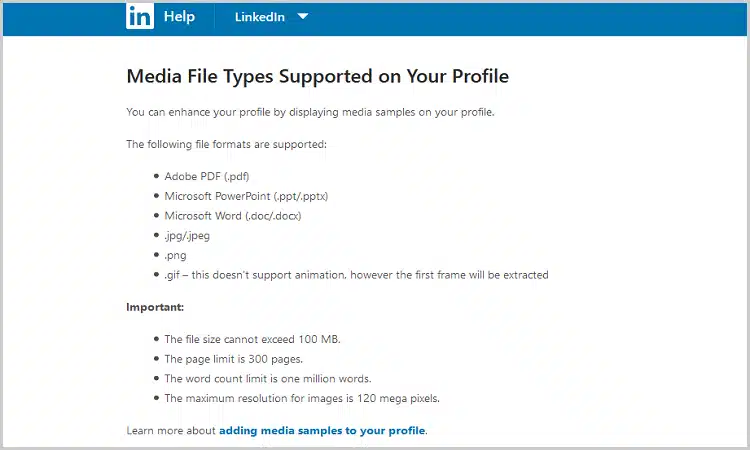
Besides adding multimedia to the various sections of your profile, you can also add it to the Featured section. This is a new profile section that has been created especially for this purpose.
This appears directly after the About section.
Here, you are able to showcase the work samples or other material that you’re most proud of: posts that you’ve authored, articles you’ve published, and other external media like images, documents, and links.
This section is indicative of where LinkedIn is heading — toward visual content and social proof.
However, the Featured section doesn’t just magically appear on your profile. First, you’ll have to add it.
To do that, click on Add Profile Section from your profile, and you’ll see a dropdown menu like this:
Click on the type of media you want to add, and you’ll see options including past media you’ve created or uploaded. Follow the prompts to upload what you want to feature.
8. Grow your network by regularly sending connection requests
Let’s assume that you’ve already connected with friends and colleagues. Let’s also assume that you’ve uploaded your address book contacts to LinkedIn and connected with those.
LinkedIn will also suggest “People you may know” like this:
These contacts help you to start building your network. The problem is that many attorneys leave it there.
The best mantra to use on LinkedIn is Connect, Engage, Convert. That’s what the next few steps are about.
To generate leads for your firm, once you have your profile in shape, it’s time to start growing your network of connections.
Connecting with peers is important for credibility, staying up to date with industry news, and receiving referrals. However, connecting with potential clients can ultimately generate leads quicker for you, especially if you are a B2B attorney.
If you’re in corporate law, for instance, start connecting with the decision-makers in the types of businesses you want to target. They’re all there on LinkedIn — you just need to search them out and start sending connection requests.
When you find the profile of someone you want to connect with, click on either Message or More.
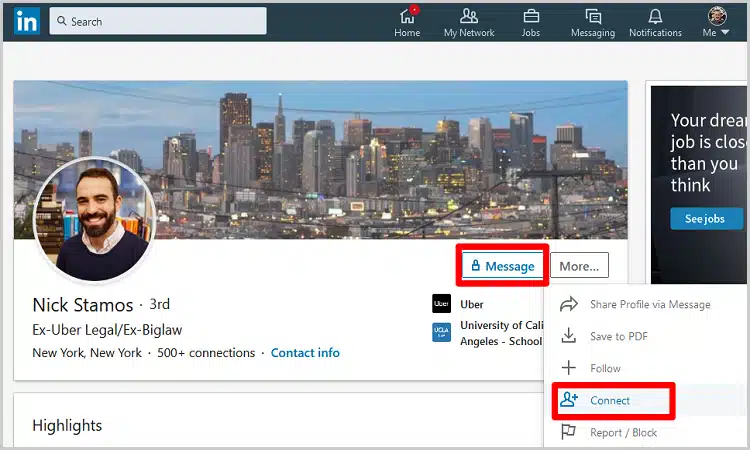
If you’re a Premium LinkedIn member (see later info on this), you can message anyone even if you’re not connected, simply by clicking Message.
If you’re a freemium member, click More and then Connect from the dropdown menu.
When you do that, you will see this:
A popup box shows where you can type a connection request message.
Make sure that your message is informal and personalized specifically for the person you want to connect with. Say why you’re reaching out.
Something like this (though adapt for your preferred style/content):
Hi <Name>,
As a fellow attorney, I was hoping to connect with you so that we can collaborate or share opportunities in the future.
Looking forward to connecting… let me know if you’re interested.
<Name>
Dear <Name>,
I have followed your posts on the <Name> LinkedIn group with interest. I think our businesses may share some interesting synergies, so connecting could be beneficial to us both.
Thanks in advance!
<Name>
Hi <Name>,
After reading your profile, I’d be interested in exploring opportunities between our two businesses. Please consider this connection request and accept if you think it would be beneficial.
Thank you in advance,
<Name>
You won’t get a 100 percent success rate, but if you send enough of these requests to your target audience, you’ll gradually build a network of peers and prospects who can provide leads to you further down the line.
Aim to send a certain amount of connection requests per week.
You can also grow your network by linking to your LinkedIn profile on your website and other social media channels. This will attract the organic growth of your network, with interested parties reaching out to connect with you.
It’s a two-way process, of course.
Joining LinkedIn groups
Another way to build connections is by joining Linkedin groups.
There are groups specifically designed for all practice areas or even your local area. These are great resources for sharing information and learning about legal trends.
To get the most from groups, we recommend you share as much as you receive. You’ll get more from groups if you interact with members and share your expertise.
9. Get active: Like, comment, and share
On your profile, you will see a section called Recent Activity.
It’s high on the page for a reason. Activity is really important on LinkedIn.
You can have a great profile (and you do need a great profile), but without activity to back it up, you won’t appear regularly or highly in searches when users type in the keywords you’re targeting.
The Activity section is where all your interactions with your community are detailed. It’s populated automatically based on the interactions you’ve recently taken.
As you can see from this lawyer’s profile, all of the main activities (comments, shares, likes, etc.) are detailed in this section:
If you click on See all, it takes you to the main feed, where you can see what he actively likes, comments on, and shares with his network:
Engaging with your community can be a scheduled task that takes only 5-10 minutes per day.
How long does it take to share a few posts you’ve read with your network? That’s what this divorce and family lawyer in Florida does.
If you send daily connection requests and also share, comment on, or like posts each day, pretty soon you have a large and engaged network.
If you don’t take activity:
- You have less chance of featuring in search (the LinkedIn algorithm rewards activity)
- Your network forgets you exist
- An Activity feed does not appear in your profile
It’s obvious, but activity requires logging in regularly to your LinkedIn account. Most professionals on LinkedIn log in once every two weeks when they remember to.
To be more effective requires a little discipline and a commitment to log in and interact daily with the community you build.
10. Post articles and other content to your feed
As well as engaging with your network by sharing, commenting on, and liking posts, you can write new posts of your own.
Status updates will show in the LinkedIn news feeds of your entire network. This means that you can reach far and wide if you take active steps to grow and engage your network.
Relevant and engaging content will win you a lot of friends among your network. That will translate into leads down the line.
You post to your news feed by clicking on Start a post from your profile:
As you can see from the icons on the right-hand side of this box, you can create an image post, video post, or document-based post. You can also write an article and post or just add text (though posts with images or videos get far more engagement than text-only posts).
Clicking on the appropriate icon will take you through the upload process.
If you click on Write an article, you will be taken to an article editor where you can get started.
Your article will be published on LinkedIn Pulse, appear in your activity feed, and may show in LinkedIn search when people search for associated keywords.
Here’s an example of an estate planning law firm that has posted an article to its feed.
It needn’t be an article, of course. You might want to post a piece of advice, an announcement, company news, an opinion on a current event, or anything of interest to your network.
Here’s another example of content from a divorce and family lawyer.
11. Consider advertising on LinkedIn
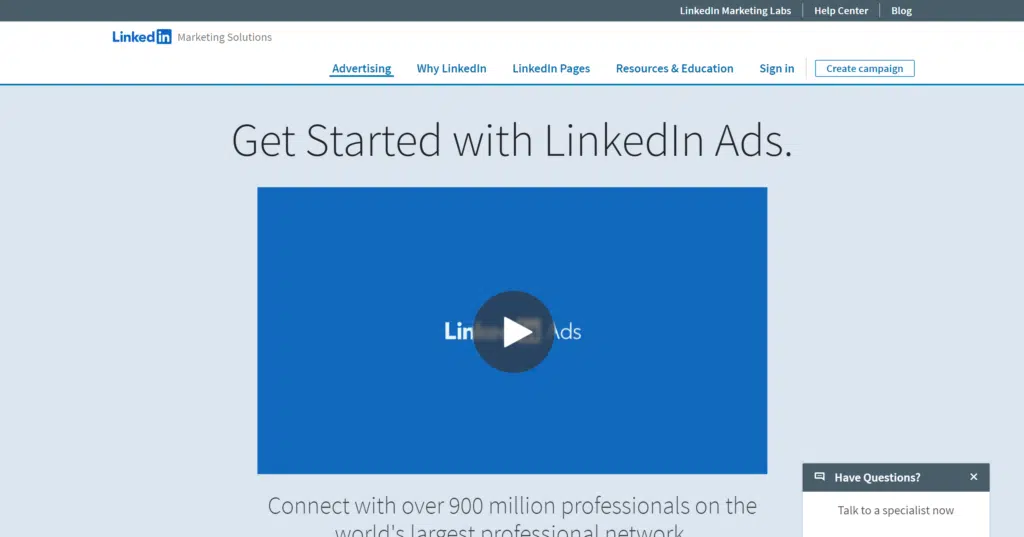
You can achieve much by growing and engaging your network organically.
With LinkedIn for lawyers, like with Facebook, you also have the option of using paid advertising to reach out to your target audience.
You can be laser targeted with your ads on social networks. People include a lot of information on their LinkedIn profiles that the ad engine can tap into.
For instance, you can target your ad based on:
- Location
- Company type/size
- Industry
- Job title/function
- Seniority level
- Educational background/fields of study
- Skills
- Group memberships
- Gender and age
- Years of experience
- Company followers and connections
Targeting CEOs of major corporations in New York becomes relatively simple for a corporate lawyer, for instance. Small business owners aged 50-60 in Miami might be a good target for an estate planning lawyer.
Ad types you can explore with LinkedIn include:
- Sponsored content: Promote updates to targeted audiences directly in their news feeds
- Sponsored InMail: Send targeted messages through native ads to specific people you’re in contact with
- Text ads: Usually a compelling headline, short description, and a small image
Once you’ve created your advertisements, you can send ad traffic to:
- An existing webpage
- A dedicated landing page
- A lead generation form
- Specific content on your LinkedIn page
However, don’t expect the same low rates as Facebook ads. They are more expensive on LinkedIn. If they produce the types of results you’re looking for with new leads and clients, the spend will be well worth it.
What are the benefits of going premium on LinkedIn?
Most lawyers reading this will be freemium members of LinkedIn. There are some distinct advantages to becoming a fully-fledged paid member besides having a gold LinkedIn Badge next to your name.
In fact, if you get really active with growing your network and generating leads, it might be essential for you to open up the extra features.
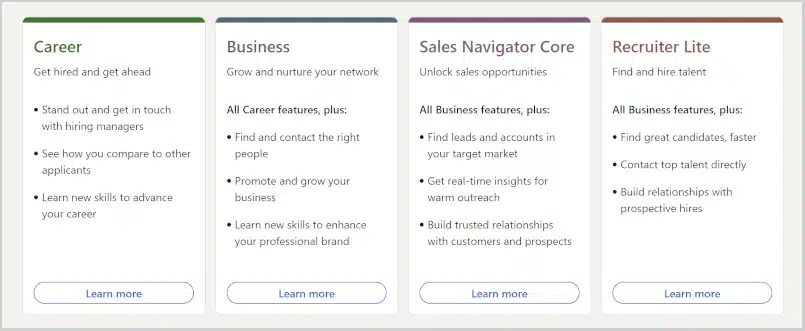
As you can see, there are different paid plans available depending on what your main goals are.
The Premium Business Plan allows you to reach out to many more potential clients and get more introductions. There are also more advanced analytics tools, as well as premium search filters and saved searches available:
A free plan restricts your activity, especially with people you’re not yet connected to.
So, if you’re looking to grow your network (and you need to do that in the connect, engage, convert model), you probably need a paid plan.
Free one-month/no commitment trials are available for all paid plans.
What about a company law firm page on LinkedIn?
This article has been largely about LinkedIn for lawyers and reaching out to grow your personal brand.
However, your law firm should also create a company page like this firm in New York.
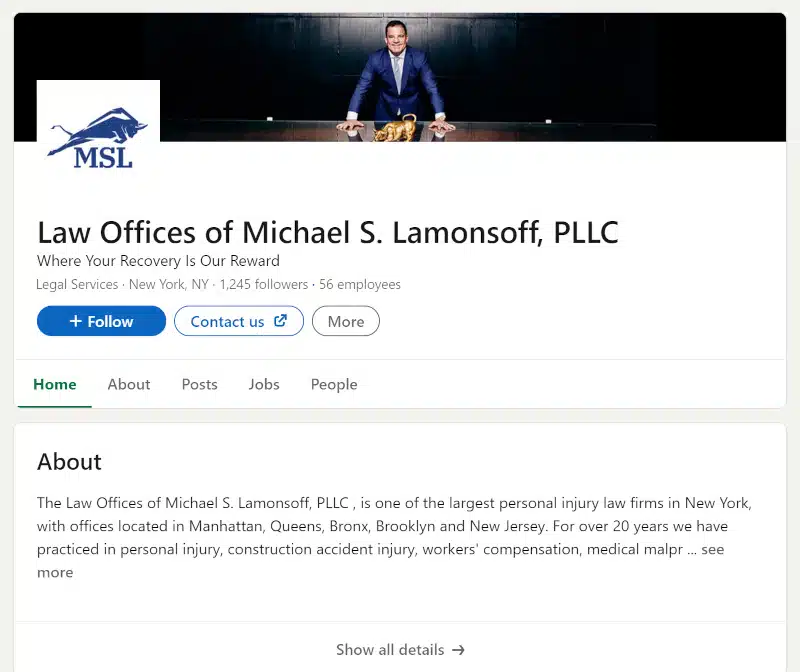
The page links to all employees who have personal profiles on LinkedIn.
Someone may have already created one for your firm. If not, set one up.
You will need a company-domain-specific email address (abc@yourdomain.com) rather than a Gmail address. Then, complete the sections as you have done with your personal LinkedIn profile.
Social media is evolving — make sure you do too
With Microsoft’s $26.2-billion acquisition of LinkedIn in 2016 now a part of history, we can expect LinkedIn to continue to grow in the years ahead.
The platform will find new ways of reaching out and connecting with more professionals and growing the network.
This means you need to keep at it with LinkedIn. Don’t just set it and forget it.
To stay ahead of the pack, tweak your LinkedIn presence as new features are added.
Dennis Dimka
As the founder and CEO of Uptime Legal Systems, I've had the privilege of guiding our company to become a leading provider of technology services for law firms.
Our growth, both organic and through strategic acquisitions, has enabled us to offer a diverse range of services, tailored to the evolving needs of the legal industry.
Being recognized as an Ernst & Young Entrepreneur of the Year Finalist and seeing Uptime Legal ranked among the Inc. 5000 list of fastest-growing private companies in America for eight consecutive years are testaments to our team's dedication.
At Uptime Legal, we strive to continuously innovate and adapt in the rapidly evolving legal tech landscape, ensuring that law firms have access to the most advanced and reliable technology solutions.
Related Posts
November 7, 2022
TikTok for Lawyers: How to Grow Your Law Firm Through TikTok Marketing (With Examples)
TikTok for lawyers, while…
December 10, 2021
Facebook Advertising for Lawyers: 17 Zuckerberg-Approved Techniques
17 Facebook advertising techniques that…
